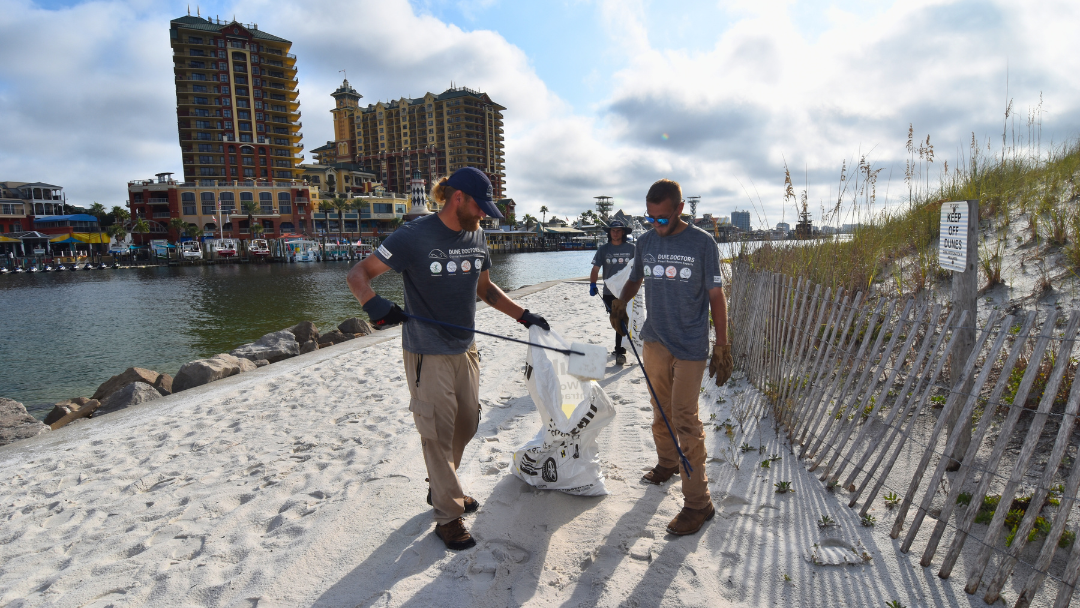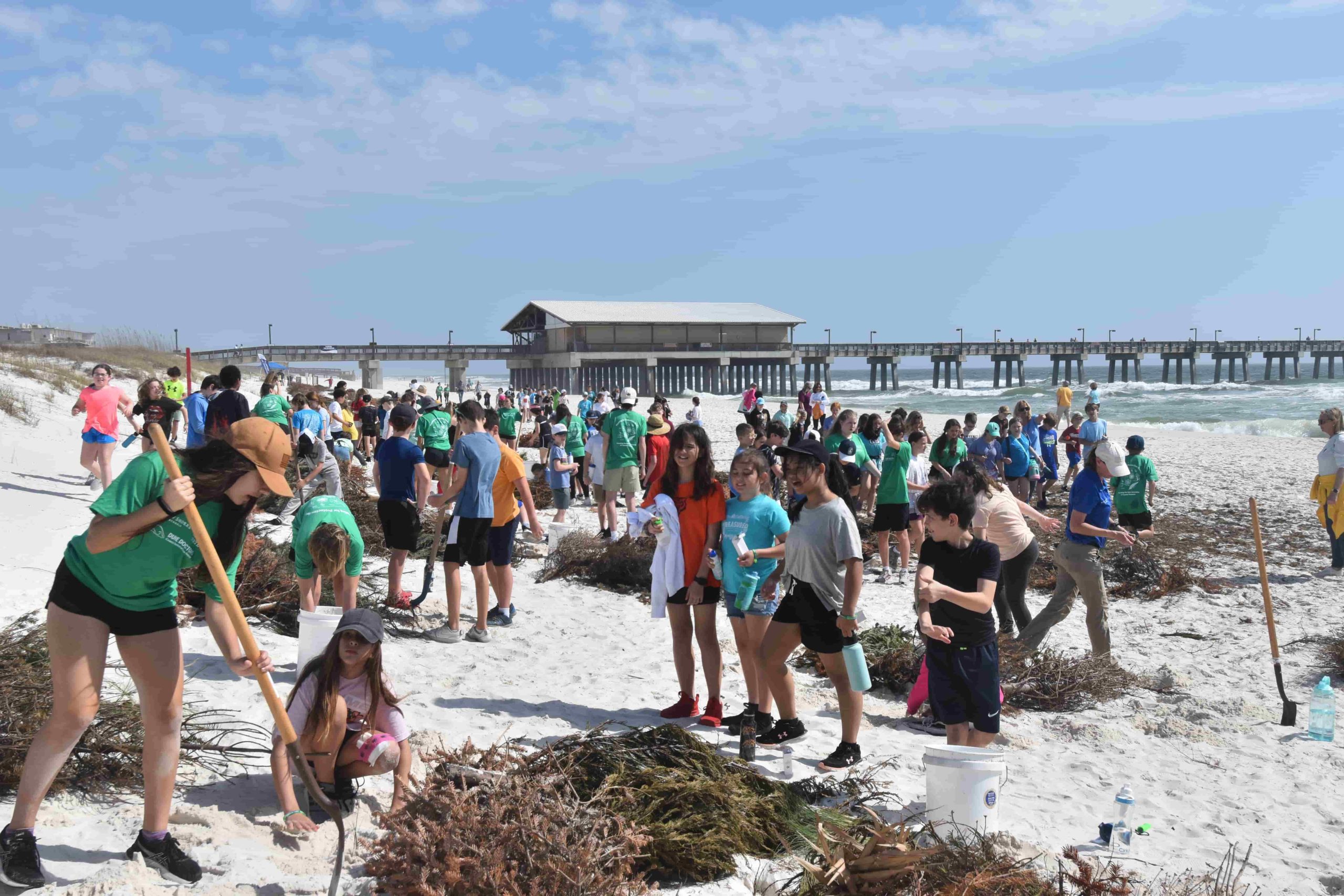14-Year Transformation: Alys Beach
In 2006, Alys Beach’s dune was bare with no vegetation to hold the sand in place. We initially installed 27,500 plants, and over a decade later, we are returning to revitalize those same plants by implementing Phase 1- Preservation. The area we are dethatching spans 50,000 square feet and is covered in a dense mat of dead vegetation (thatch). Once the thatch is removed, we will hand-broadcast a coastal-specific, custom-blended, slow-release fertilizer designed to help the plants grow deep roots after undergoing the thatch-removal process. Furthermore, we will be carrying out routine maintenance on the property to observe and tend to the plants as they reestablish their complex root systems in search of moisture located deep within the core of the dune.
Thatch = Dried Out Coastal Plants
One of the key sources of nutrients for these coastal plants are their own leaves and stems that die and are quickly buried by the wind. However, when wind cannot bury the dead plant material fast enough, a clump that resembles a ball of yarn can form at the base of the plant. This clump of dried out dead plant material is called thatch. A buildup of thatch is detrimental because it can concentrate moisture at the surface of the dune or dry out and pose other threats.
Alys Beach 04-20-2006 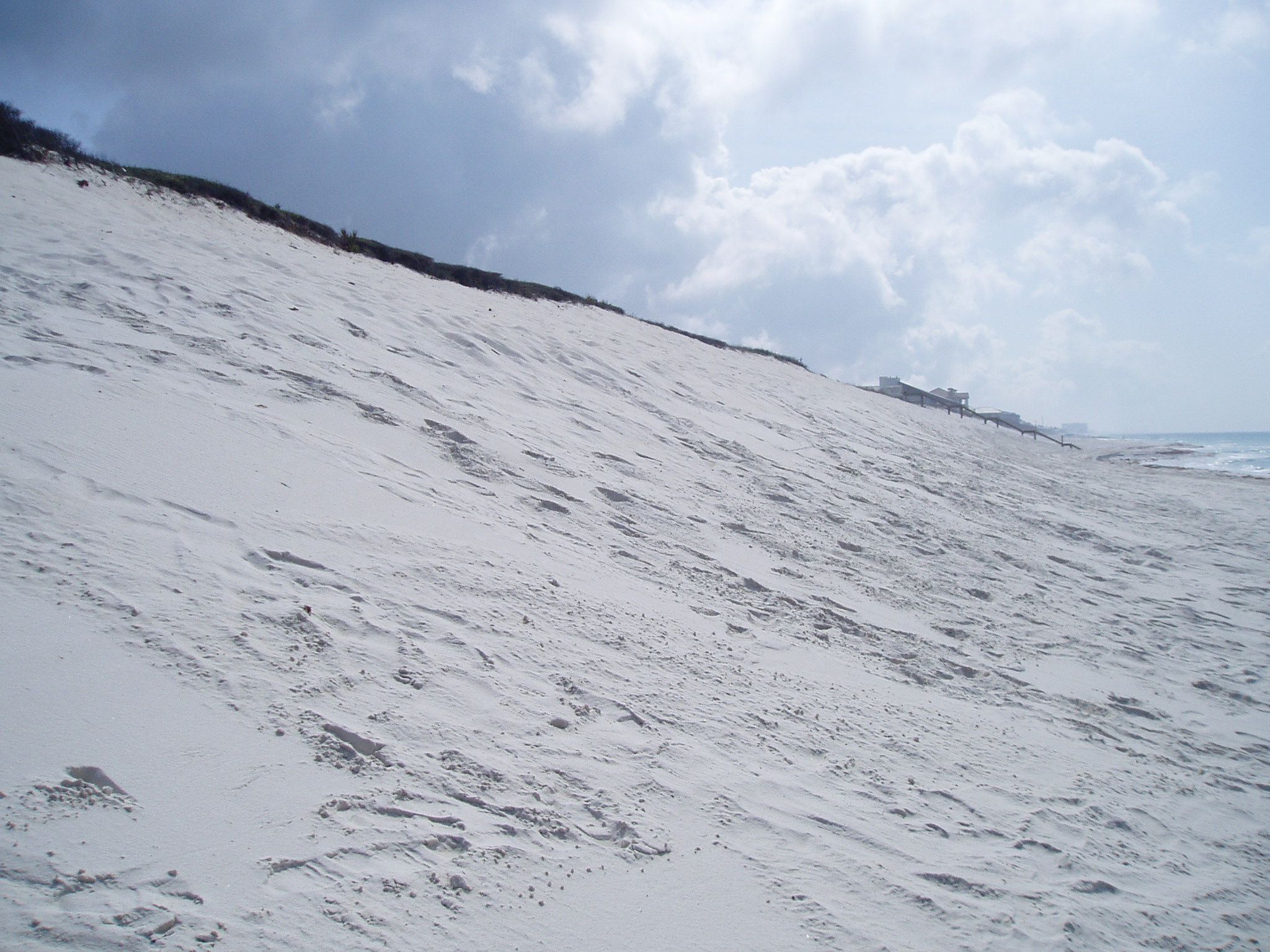
Alys Beach 06-02-2006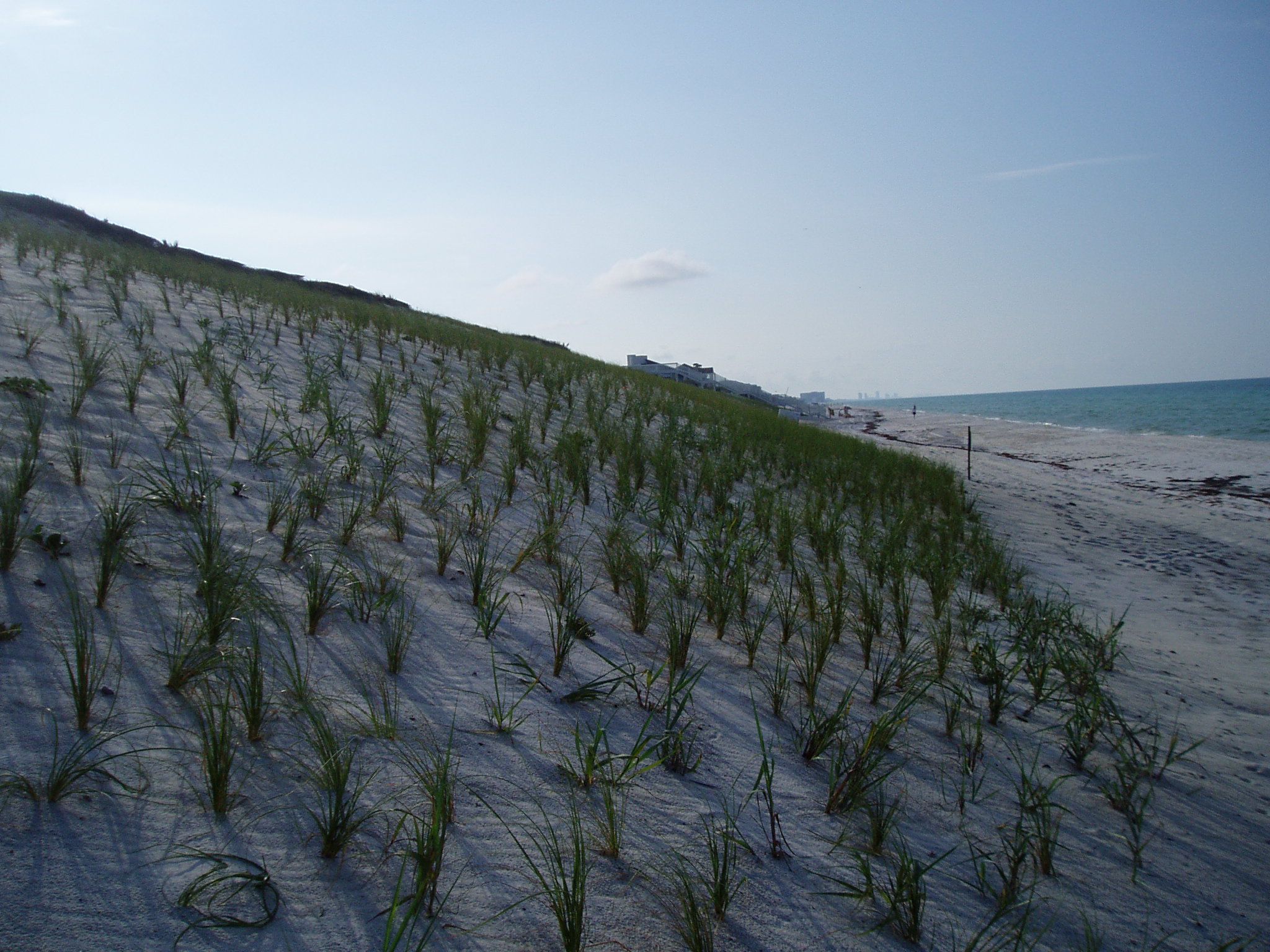
Alys Beach 07-19-2007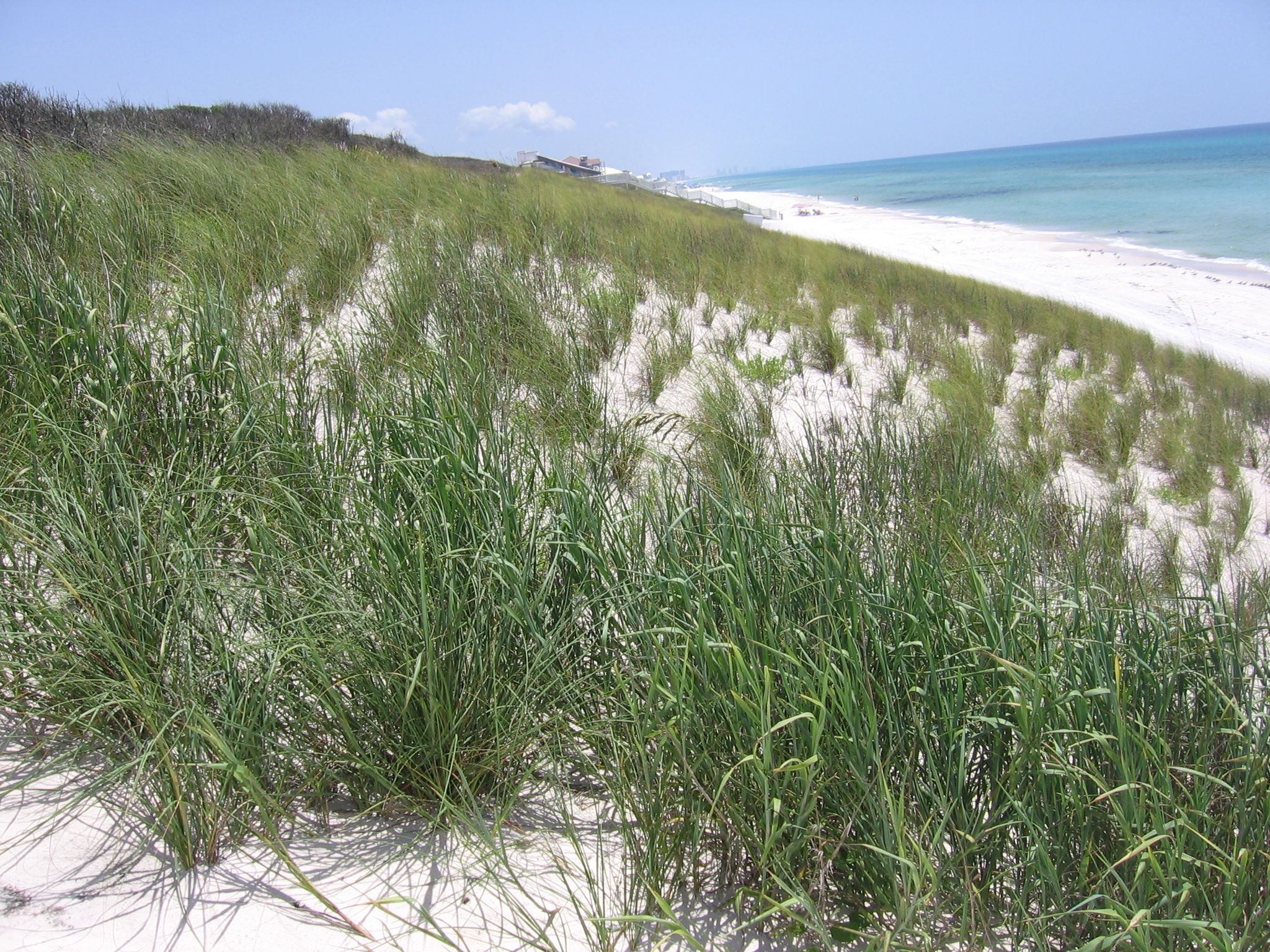
Alys Beach 07-08-2008
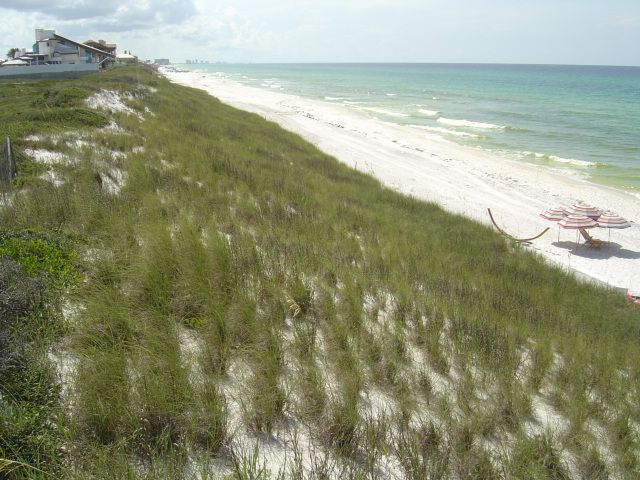
Alys Beach 08-26-2011 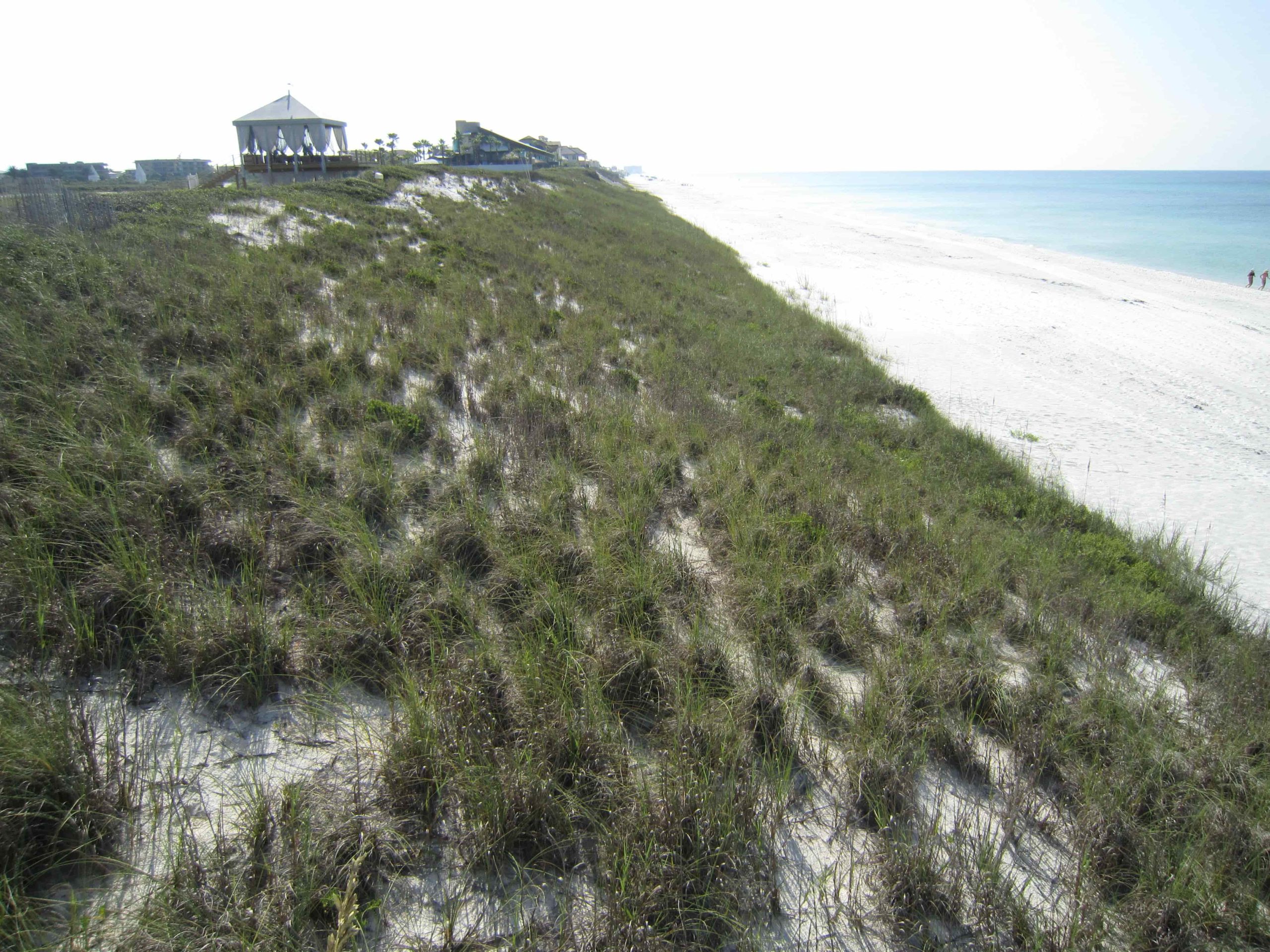
Alys Beach 01-19-2020 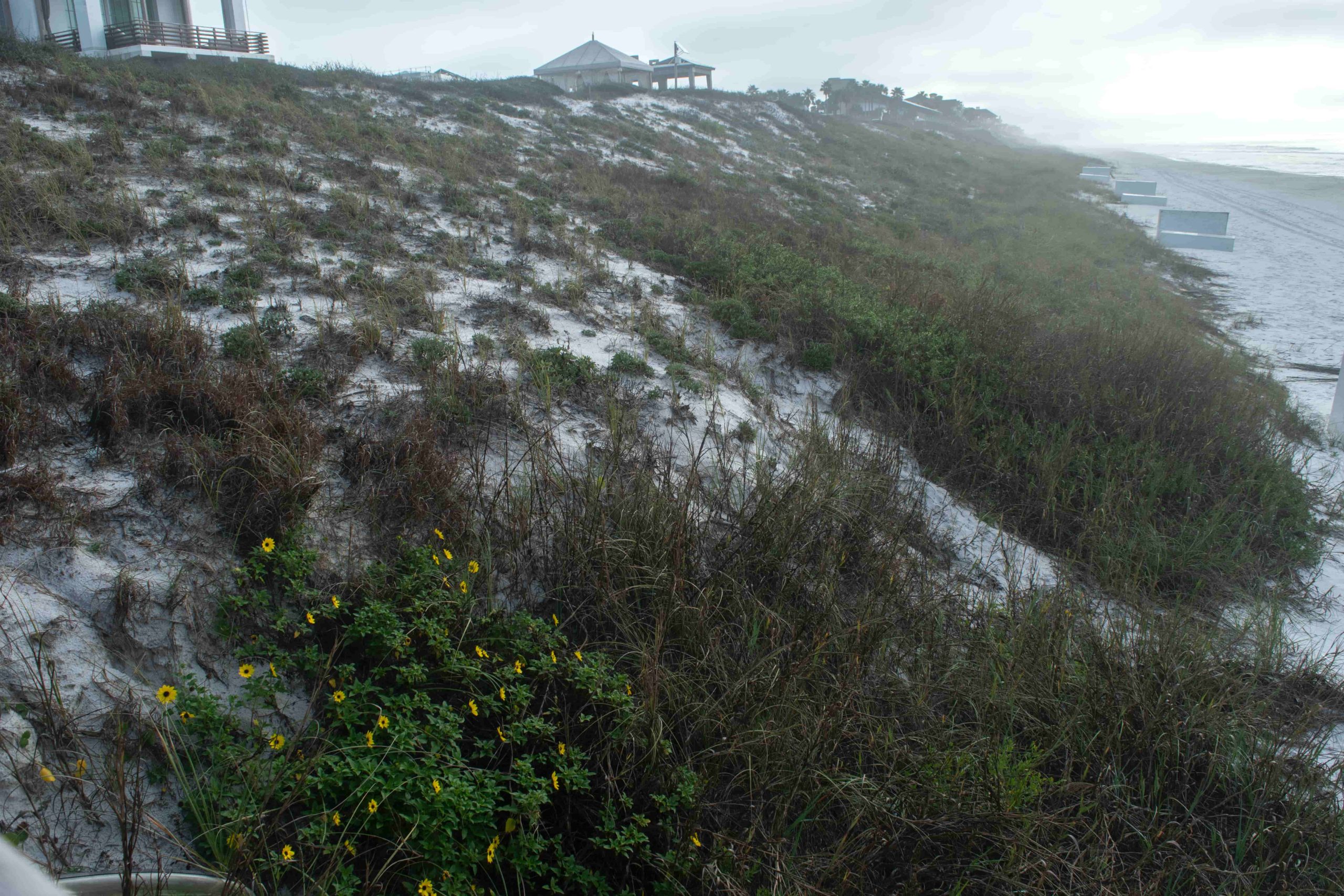
Alys Beach 2020
Over the course of the years, the vegetation we installed on Alys Beach’s dunes faired well. As you can follow in the images above, between 2006 and 2011, the plants matured, established and progressively colonized the beach, thus accumulating significant amounts of sand at the toe of the dune. Since then, the plants suffered both from the inherent lack of nutrients in our beautiful quartz beaches and from the progressive build-up of thatch. But now, the right steps are being implemented. To ensure the dune is at its healthiest, nearly a decade later, we were called to evaluate it and implement the steps needed to optimize the protection it provides.
Phase 1: Preservation Benefits
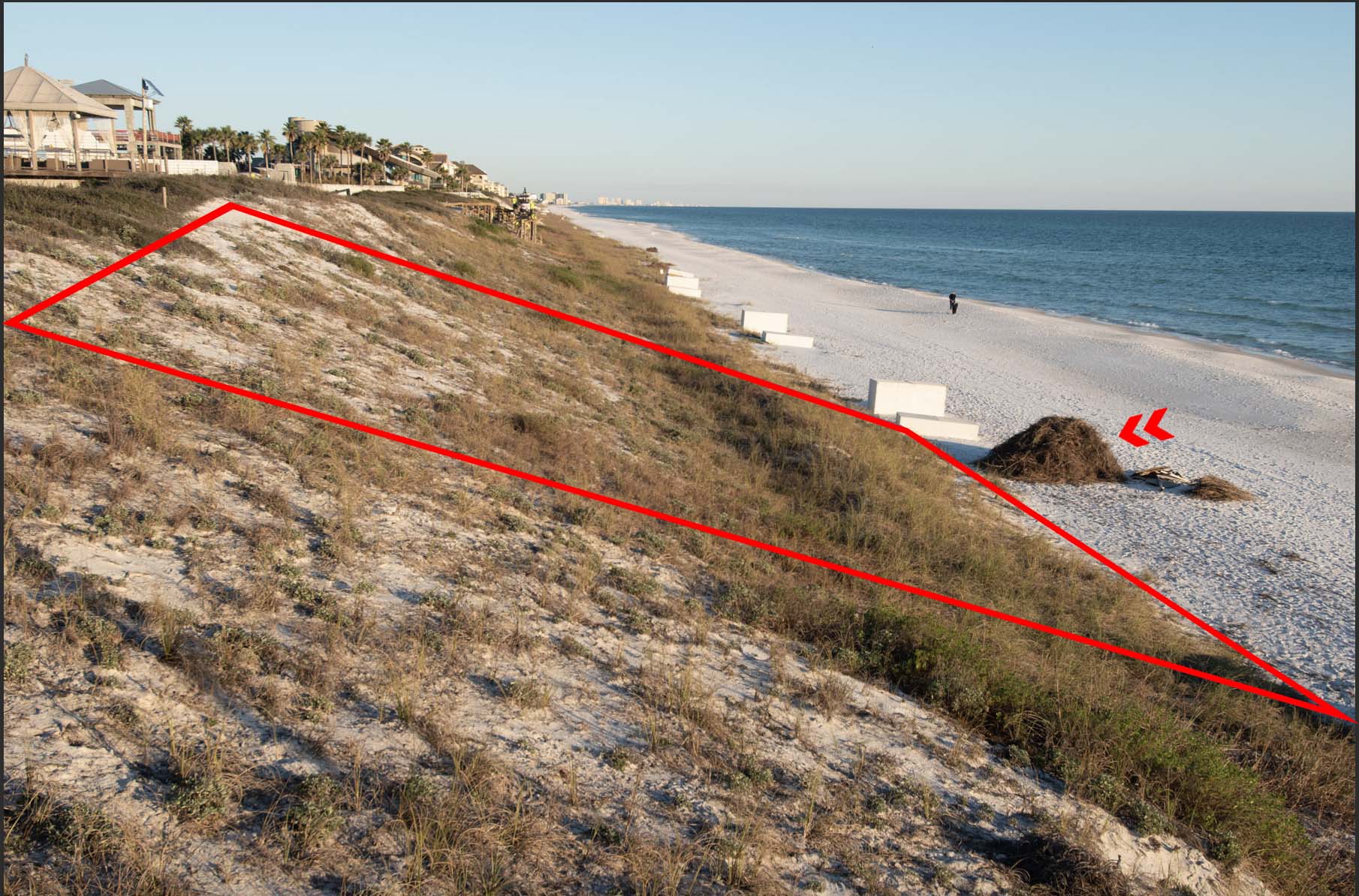
Phase 1 – Preservation is often the starting point for most sand dune restoration projects we carry out. Phase 1 focuses on removing invasive and dead vegetation. Other steps are also taken to encourage a healthier ecosystem where the native vegetation develops a root system that is deeper, stronger, and more resilient to surge. This phase is the basis for all other components of the Dune Master Plan™. The native vegetation already in place is any dune’s greatest asset and needs to be preserved. Coastal plants are designed to survive high winds, droughts, temporary inundation, and being repeatedly buried by wind-borne sand. The vegetation thrives under these dynamic conditions and ,when properly taken care of, responds by sending out a complex root system that weaves a web throughout the dune. This complex root system, in its search for moisture and food, is what transforms a pile of sand into a protective berm that can limit the landward reach of storm surge.
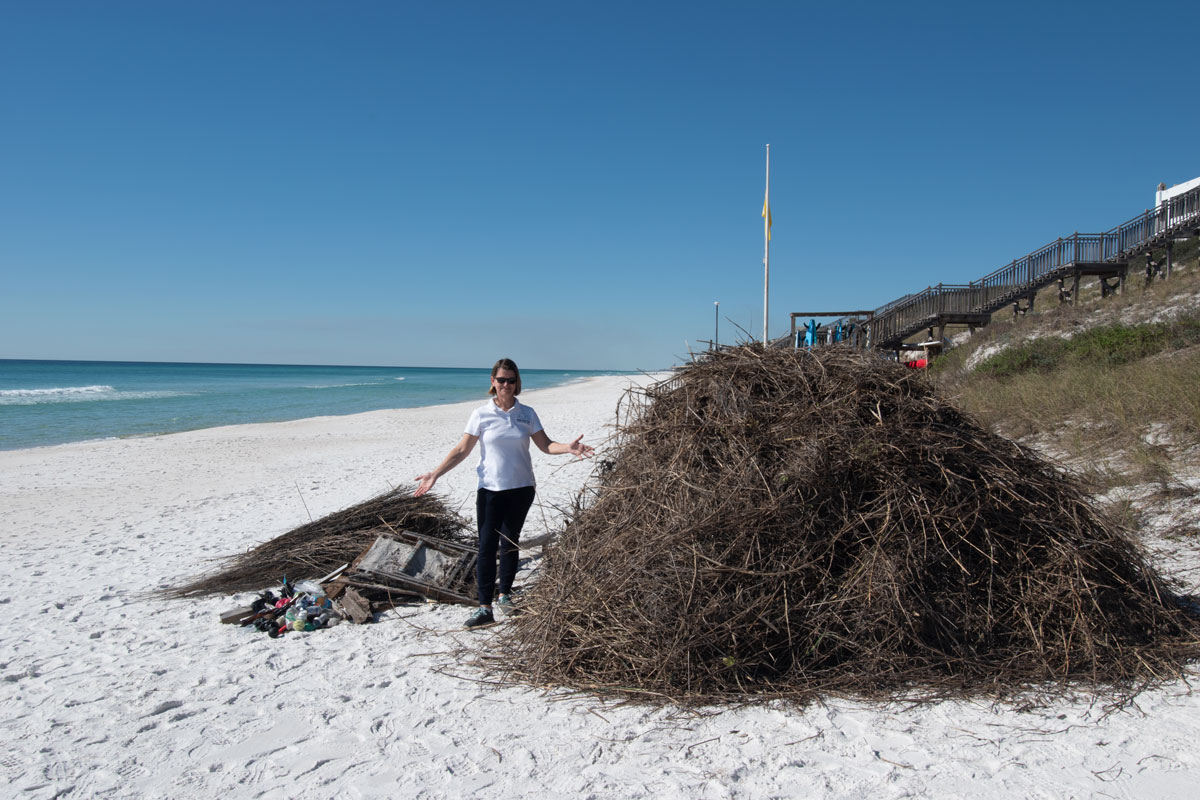
Risks Posed by Thatch
If the thatch is exposed to rain or high humidity, it will collect water and offer an ideal breeding environment for diseases that will eventually kill the plant. The surface-level moisture will also cause the plant to not send out deep roots in search of water. On the flip side, if the coast undergoes an extended period of drought, the thatch will dry out and become a fire hazard that can quickly engulf a dune in flames if accidentally ignited by a cigarette butt or fireworks. The thatch also provides safe harbor for invasive pests like snakes seeking out the non-native rodents hiding among the dried out vegetation. Your takeaway should be that an accumulation of thatch will result in weak coastal plants with shallow root systems. These shallow roots are not effective at holding sand in place and by consequence the dune they grow in is less capable of protecting your property against storm surge.
Alys Beach Leads By Example
Alys Beach is taking proactive steps to protect their community and the environment. By taking care of their dunes, they are both reaping immediate rewards and laying a foundation for long-term gains. Now that the thatch is removed, the vegetation on the dune will look more vibrant come May. Most importantly, the work carried out on the dunes emphasizes for those at risk of surge-damage that steps are being implemented to limit the potential impacts of a devastating hurricane. Finally, Alys Beach is taking care of their beautiful environment and giving Mother Nature the resources necessary to create a thriving dune ecosystem.
